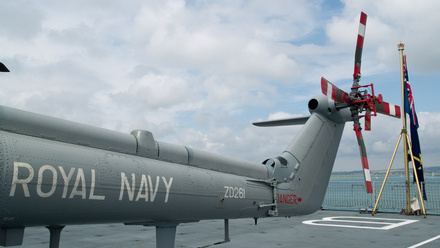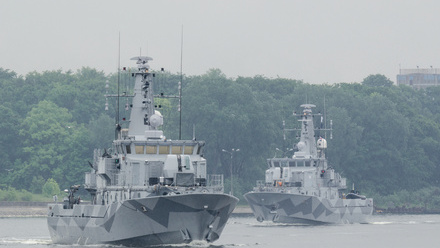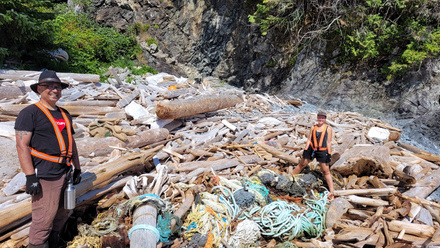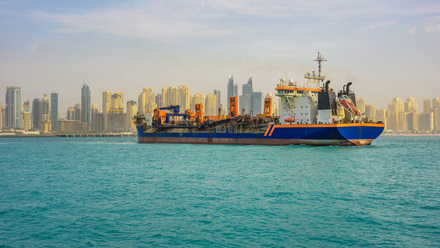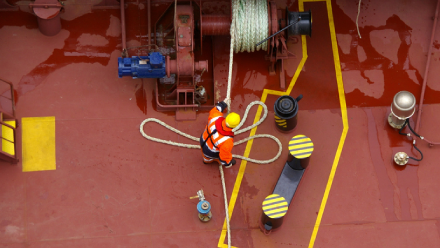History: The hybrid merchant and naval vessels
The term hybrid has come into common usage, but pre-WWII and in the 60s/70s, it was applied to various merchant ship and naval vessel designs.
The purpose of the hybrid ship is to combine two or more separate functions in one vessel so as to maximise its commercial potential or achieve conflicting operational features in the case of a warship. History, however, has suggested that this philosophy is rarely effective as the vessels in question end up ‘falling between two stools’ and being less efficient than their dedicated equivalents.
In the merchant sector so-called combination carriers have included ore/oil carriers, OBOs (ore-bulk-oil), and container bulkers.
The logic of combining dry and liquid cargoes proved popular during the 1960s and early 1970s, especially in the form of the OBO. However, the first examples were Sweden’s ore/oil carriers Rautas and Raunala of the mid-1940s.
Typical dry and wet cargo ships of the period were designed with large hatches to facilitate loading and discharging. The hatch covers were made to be oiltight so that oil cargoes could be loaded while the holds were strengthened for ore cargoes. In addition, the vessel had to be fitted with all the necessary piping and pumps to handle the oil cargo.
Size for size, the ore/oil carriers and OBOs are reported to have cost about 15% to 20% more to construct than a conventional tanker or bulker. Other major problems on these ships included gas freeing when loading dry cargo after an oil cargo, and the high maintenance costs caused by heavy wear and tear. This combination made such vessels uneconomic to operate unless on a dedicated service.
Also, with a number of losses including Berg Istra (1976), and Berg Vanga (1979), OBOs gradually fell out of favour with ever fewer ships either built or in service.
Nevertheless, some operators continue to support the ore/oil carrier. One such example is Torvald Klaveness.
Containers with bulk
Another hybrid approach, the conbulker combined bulk cargoes with containers. Two companies were the main operates of such ships - Cast and ABC Containerline.
Typical of the trade was the 70,870 dwt Cast vessel Cast Otter with a teu capacity of 1,466. It operated by carrying bulk cargoes such as ore from Canada to Europe and containers on return. Service speeds were low at around 14 knots, compared with the dedicated container ship at up to 26 knots, making the conbulker less competitive. Inevitably the concept proved to be better at being a bulk carrier than a container ship.
The naval hybrid
For navies in the 1930s, the idea of a hybrid, especially combining a cruiser and an aircraft carrier function, was pursued by many but only a few examples were designed and built.
Sweden’s Gotland was an aircraft-cruiser built by Götaverken and completed in 1934. The Naval Construction Board had decided that it wanted a ship capable of operating as a cruiser and a seaplane carrier. The resultant vessel was armed with six 152mm guns forward and a flight deck aft for up to 11 seaplanes. As its aircraft became outdated, in 1943-44 it was converted into an anti-aircraft cruiser.
The Japanese Navy would be the main proponent of the hybrid. In 1937 it took delivery of the cruiser Tone which, with sistership Chikuma. was designed for long-range scouting with provision for a large seaplane capacity.
They were equipped with eight 20cm guns forward and a flight deck aft for eight seaplanes. A later design for the navy was the cruiser/carrier Oyodo of 1943. Aft, it had a 44m long catapult and facilities for up to six seaplanes, while forward were two triple 155mm turrets. It was later converted into a command ship.
The Pacific War resulted in two other hybrid projects that emerged because of necessity. The cruiser Mogami, heavily damaged at the Battle of Midway, was converted to carry 11 reconnaissance floatplanes on an extended aft deck following the removal of the two main gun turrets.
By 1944 following the loss of most of its main aircraft carriers, the Japanese Navy embarked on an even stranger hybrid. It took two ageing battleships – Ise and Hyuga – removed their two 12-inch gun turrets and replaced them with a short flightdeck. As converted, up to 22 aircraft could be handled but, by then, there were not enough available.
Tell us what you think about this article by joining the discussion on IMarEST Connect.
Image: Battle of Midway, June 4-6, 1942. Credit: Shutterstock.

